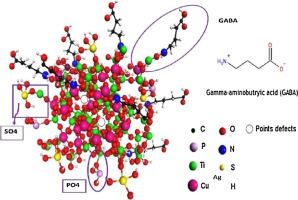Molecular Catalysis ( IF 3.9 ) Pub Date : 2018-02-26 , DOI: 10.1016/j.mcat.2018.02.010 T. Lopez , J.L. Cuevas , L. Ilharco , P. Ramírez , F. Rodríguez-Reinoso , E. Rodríguez-Castellón

|
New copper compounds were proposed as alternative toxic agents against Nosocomial Infections (NI); in contrast with other copper complexes reported in the literature, they were inorganic nanobiocatalysts. The design of diverse Cu species such as Cu(0), Cu(I) and Cu(II) over TiO2 has enabled us to induce hydrogen bonds in the nanoparticle network. The main objective of this research is to use copper instead of silver to avoid the high cost at industrial level, of the use of silver. Four Cu/TiO2 precursors were used and these were functionalized using phosphates, sulfates and organic compounds on the external and internal surface (Cu/TiO2-F). The chemical state of central metal and the surface composition were studied by XPS and the materials were analyzed by Electronic Paramagnetic Resonance and UV–vis spectroscopies, and finally they were microbiologically tested against E. Coli.
中文翻译:

使用功能化的Cu / TiO 2纳米生物催化剂进行XPS表征和大肠杆菌DNA降解
提出了新的铜化合物作为针对医院感染(NI)的替代毒性剂。与文献中报道的其他铜络合物相反,它们是无机纳米生物催化剂。在TiO 2上设计多种Cu物种(例如Cu(0),Cu(I)和Cu(II))使我们能够在纳米粒子网络中诱导氢键。这项研究的主要目的是使用铜代替银,以避免在工业水平上使用银的高成本。使用了四种Cu / TiO 2前驱物,并使用了内,外表面的磷酸盐,硫酸盐和有机化合物对它们进行了功能化(Cu / TiO 2-F)。用XPS研究了中心金属的化学状态和表面组成,并通过电子顺磁共振和紫外可见光谱对材料进行了分析,最后对它们进行了大肠杆菌的微生物学测试。











































 京公网安备 11010802027423号
京公网安备 11010802027423号